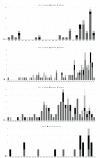A Scoping Review of Current Social Emergency Medicine Research
- PMID: 34787563
- PMCID: PMC8597693
- DOI: 10.5811/westjem.2021.4.51518
A Scoping Review of Current Social Emergency Medicine Research
Abstract
Introduction: Social emergency medicine (EM) is an emerging field that examines the intersection of emergency care and social factors that influence health outcomes. We conducted a scoping review to explore the breadth and content of existing research pertaining to social EM to identify potential areas where future social EM research efforts should be directed.
Methods: We conducted a comprehensive PubMed search using Medical Subject Heading terms and phrases pertaining to social EM topic areas (e.g., "homelessness," "housing instability") based on previously published expert consensus. For searches that yielded fewer than 100 total publications, we used the PubMed "similar publications" tool to expand the search and ensure no relevant publications were missed. Studies were independently abstracted by two investigators and classified as relevant if they were conducted in US or Canadian emergency departments (ED). We classified relevant publications by study design type (observational or interventional research, systematic review, or commentary), publication site, and year. Discrepancies in relevant publications or classification were reviewed by a third investigator.
Results: Our search strategy yielded 1,571 publications, of which 590 (38%) were relevant to social EM; among relevant publications, 58 (10%) were interventional studies, 410 (69%) were observational studies, 26 (4%) were systematic reviews, and 96 (16%) were commentaries. The majority (68%) of studies were published between 2010-2020. Firearm research and lesbian, gay, bisexual, transgender, and queer (LGBTQ) health research in particular grew rapidly over the last five years. The human trafficking topic area had the highest percentage (21%) of interventional studies. A significant portion of publications -- as high as 42% in the firearm violence topic area - included observational data or interventions related to children or the pediatric ED. Areas with more search results often included many publications describing disparities known to predispose ED patients to adverse outcomes (e.g., socioeconomic or racial disparities), or the influence of social determinants on ED utilization.
Conclusion: Social emergency medicine research has been growing over the past 10 years, although areas such as firearm violence and LGBTQ health have had more research activity than other topics. The field would benefit from a consensus-driven research agenda.
Conflict of interest statement
Figures



References
-
- Anderson ES, Hsieh D, Alter HJ. Social Emergency Medicine: Embracing the Dual Role of the Emergency Department in Acute Care and Population Health. Ann Emerg Med. 2016;68(1):21–25. - PubMed
-
- Rodriguez RM, Fortman J, Chee C, et al. Food, shelter and safety needs motivating homeless persons’ visits to an urban emergency department. Annals of emergency medicine. 2009;53(5):598–602. - PubMed
-
- Fahimi J, Goldfrank L. Principles of Social Emergency Medicine. Annals of emergency medicine. 2019;74(5S):S6–S10. - PubMed
Publication types
MeSH terms
Grants and funding
LinkOut - more resources
Full Text Sources
Miscellaneous
